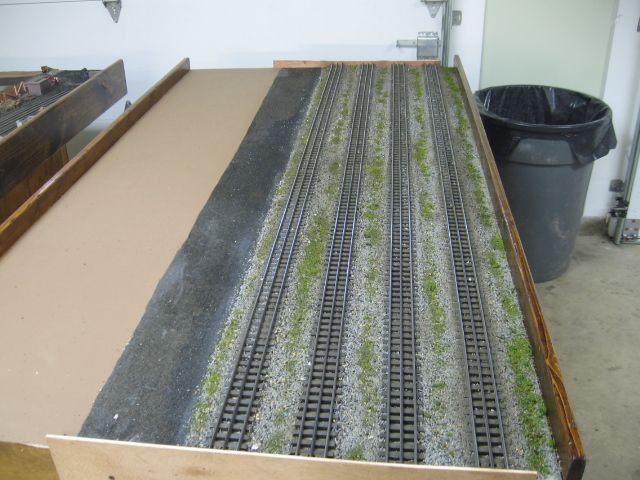Regarding attaching Homasote:
I live in Oklahoma. In the region where I live there are very few homes with basements. In fact, many of the underground storm shelters are "popping out of the ground" due to the clay rich soil and the ground water after heavy rains which floated the concrete or steel storm shelters out of the ground.
Thus we build in the house, in the garage or in my case, I built a 16x20 storage building just for the layout. While it has AC and baseboard electric heat, they only run when I am in the building. Homasote has been in place for well over 15 years. Rainy seasons, dry seasons, summer heat and winter cold.
I NAILED mine in place with small finishing nails intended to hold 1/4 inch paneling and have NO noticeable movement. Granted, there is no scenery in place that would crack if the Homasote shifted. But there is no sign it shifted, so I am confident that will be a minor issue for my layout when I finally get around to scenery on this 3 rail layout.
Prior to the storage/"train" building, I used one of the bedrooms for my HO layout. It was 80-85% scenery complete. I used matte medium, cork roadbed on plywood and some Homasote, cardboard strips and paper towels soaked in plaster along with acrylic paints and ink washes...all the scenery techniques from Dave Frary's book. In that environment it worked fine. I plan to use much of the same...however, this is an Oklahoma City industrial switching district layout, so no hills like the Arkansas coal region of HO days.
My attitude is build it...if you have problems, it makes for a great thread topic to show how you "repaired" or tore it out and "rebuilt" the problems.



